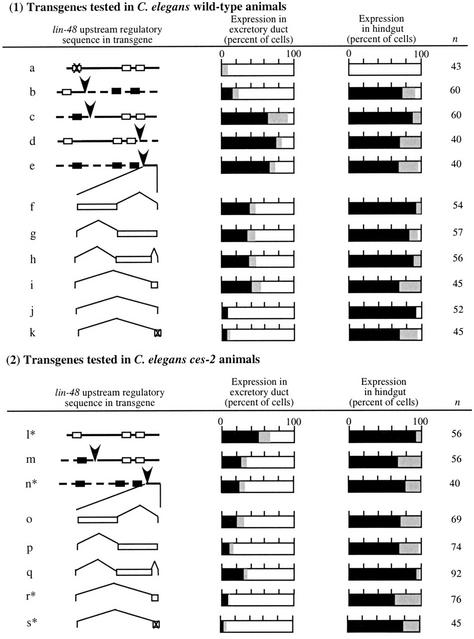Figure 3.
(1) Experiments to identify cis-regulatory sequences important for excretory duct cell expression in C. elegans. (a) A mutation in the Ce-lin-48 promoter (indicated by X) shows the conserved lre2 sequence is important for expression in both excretory duct and hindgut cells (data from Johnson et al. 2001). (b–j) Chimeric promoter sequences resulting from DNA swap between C. elegans and C. briggsae and deletion analysis of the chimeric promoter identify at least four additional regulatory regions that contribute to Ce-lin-48 expression in the duct cell. (k) Mutations in putative CES-2-binding sites in the Ce-lin-48 promoter reduced the excretory duct cell expression. (2) Experiments to show that ces-2 affects lin-48 excretory duct cell expression. (l–s) ces-2(RNAi) reduced lin-48 expression in transgenic animals. Reduction of lin-48 expression by transgenes marked with asterisk was also confirmed in ces-2(n732) mutant background. The percentages of cells expressing GFP (black bar), expressing very low, but detectable levels of GFP (gray bar) or not expressing GFP (white bar), are indicated for each construct. (n) Number of animals scored for expression. Source of DNA in transgene indicated as in Figure 2. For chimeric clones, arrowhead indicates the point of the DNA swap. GFP expression in hindgut was used as an internal control for expression level and presence of the transgene in all experiments.

